Don't wanna be here? Send us removal request.
Text
WOII Compulsory: In Summary
Steve Jobs once said, "Design is not just what it looks like and feels like. Design is how it works" (Walker).
Through this course, my biggest change was realizing that design is not just about how things look. I started to see design as a medium that allows people to find different meanings, and to have unique experiences and thoughts through it. I believe there is no single ��right answer” in design. It can be interpreted in various ways based on one’s social, cultural, and personal background. That’s why it’s important to research the users and understand the social context behind the design.

Now, I ask myself three key questions whenever I start a design: 1. What kind of meaning does this design element (color, shape, size, etc.) communicate? (From a semiotic perspective)

2. How might different users understand or interpret this design?
(From a post-structuralist perspective)

3. Does the design clearly communicate what it’s supposed to?
(From a phenomenological perspective)

These questions have helped me think more deeply and broadly about design. As a result, my designs now connect better with users both emotionally and meaningfully.
I now see philosophy not as abstract, but as a practical guide for creativity. Design is always about people and society, and philosophy helps me ask important questions and focus on key values like user-centeredness, openness to interpretation, and sensory experience.
This course has made me approach design more critically, and I plan to continue using this philosophical mindset in my future work.
(247 words)
reference
Walker, Rob. "The Guts of a New Machine." The New York Times Magazine, 30 Nov. 2003, https://www.nytimes.com/2003/11/30/magazine/the-guts-of-a-new-machine.html. Accessed 9 Apr. 2025.
Koh, Rae. "The Influence of Culture: How My Trip to Bangkok Has Shifted My Perception on Design." LinkedIn, 30 June 2023, https://www.linkedin.com/pulse/influence-culture-how-my-trip-bangkok-has-shifted-perception. Accessed 9 Apr. 2025.
Opus Web Design. "Elements of Design." OnlineDesignTeacher, 23 Feb. 2016, https://www.onlinedesignteacher.com/2015/11/design-elements_91.html. Accessed 9 Apr. 2025.
0 notes
Text
WOII: Week 10 - Poststructuralism
"The best entertainment is unpredictable—it keeps you wanting more."(Goldlilys Media) When I design, I prioritize clarity and communicative effectiveness. This reflects a structuralist approach. While these established frameworks offer stability, they can also feel rigid, conservative, and uninspiring. In contrast, unstable and improvisational approaches may lack predictability, but they often carry a unique sense of charm and character.


In an activity where I randomly paired photographs with text, unexpected interpretations emerged—meanings unrelated to the original intent. This unpredictability itself became a source of creative delight. It reminded me of what poststructuralism suggests that meaning is never fixed, but always shifting, and open to reinterpretation depending on context and perception. The combination of image and text no longer communicated a singular, fixed message, but instead opened up multiple layers of meaning to the viewer.

I had a similar experience during a silkscreen printing project in a craft class. Without a set plan, I relied on intuition and spontaneity, which led to unexpected visual outcomes. Though unintentional, these results were often the most dynamic and unique, showing how creative uncertainty can lead to meaningful discoveries that structured approaches might miss.

This insight carried into my studio design classes. At times, strictly following conventional principles like functionality and legibility made my work feel less playful and engaging. So I tried ignoring the rules for a bit, and the results were more fun. Stepping away from the rules often led to exciting new ideas that embraced the fluidity of meaning, as poststructuralism suggests.
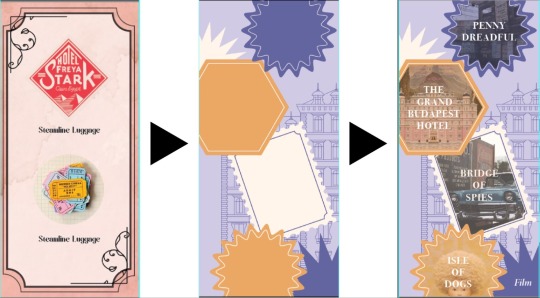
For me, poststructuralism is not just a theory, but a process. Embracing instability and unpredictability allows me to create more personal and unique designs, where true creative freedom and new ideas emerge.
(281 word)
Reference
"What Are the Benefits of Unpredictability?" Goldlilys Media, https://goldlilys-media.com/blog/what-are-the-benefits-of-unpredictability/. Accessed 9 Apr. 2025.
Risner, Vaneetha. "Kintsugi: Beauty in the Broken." Vaneetha.com, 17 Mar. 2022, https://www.vaneetha.com/journal/kintsugi-beauty-in-the-broken. Accessed 9 Apr. 2025.
Oddrid. "Poststructuralism and the Art of René Magritte." Socalled Fixed Stars, 16 Feb. 2010, https://parallacticdrift.wordpress.com/2010/02/16/poststructuralism-and-the-art-of-rene-magritte/. Accessed 9 Apr. 2025.
design.swap. "The Unpredictability of Creativity." Bootcamp, 28 Oct. 2024, https://medium.com/design-bootcamp/the-unpredictability-of-creativity-ffd557f10207. Accessed 9 Apr. 2025.
1 note
·
View note
Text
WOII: Week 9 - Cultural Materialism
From the perspective of cultural materialism, design is shaped by environmental, technological, and economic factors. This means designers must consider the medium and customers when creating work. I focused on how a time period’s technology and resources determine design. For example, before digital tools, posters were hand-drawn or printed using letterpress, while modern designs rely on digital software.
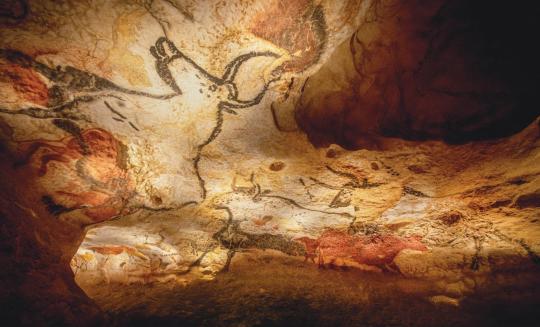


In the activity, we designed a poster for a zombie apocalypse world. Since it would be hard to use the internet in that world we drew it by hand using pencil and incorporated radio frequencies, as radios would be more common than phones or TVs. Interestingly, these technological limitations completely changed our design. We couldn’t use photos or detailed information, and the restricted color palette gave the poster an entirely different feel than our initial concept. However, this limitation also resulted in a unique and characteristic aesthetic.

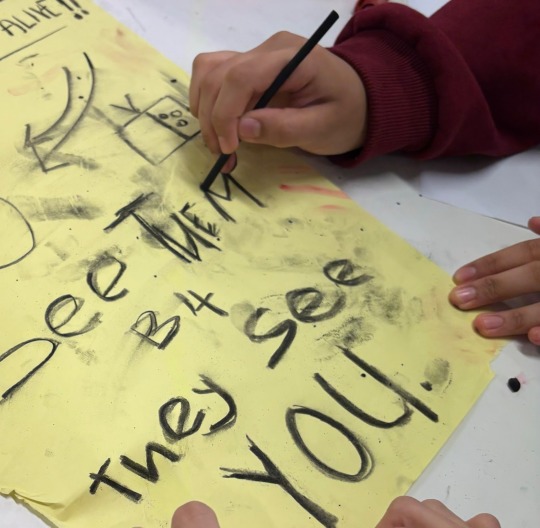

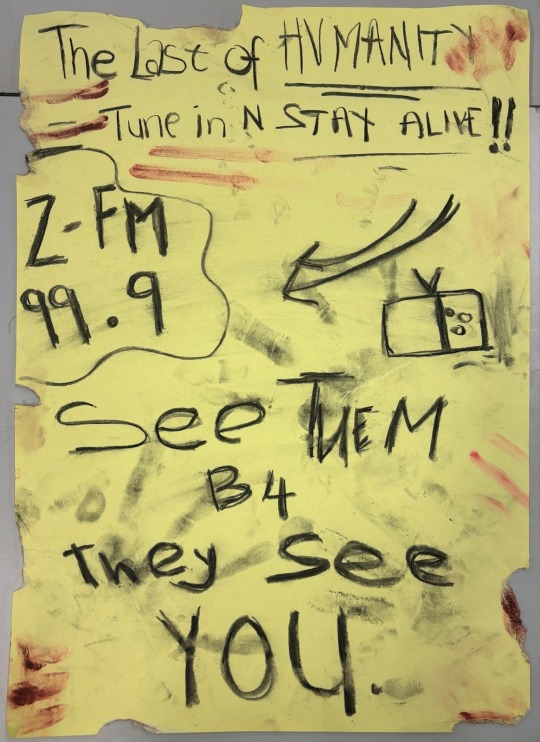
"If it would have been handmade at the time, then we make it by hand now."(Atkins) In the studio, I studied Annie Atkins, a designer making props for historical films. She uses authentic materials like ink and paper and even draws by hand instead of using digital programs. By designing with period-accurate materials, she enhances realism, allowing audiences to fully immerse themselves in the film. This attention to historical accuracy also defines her distinct style.

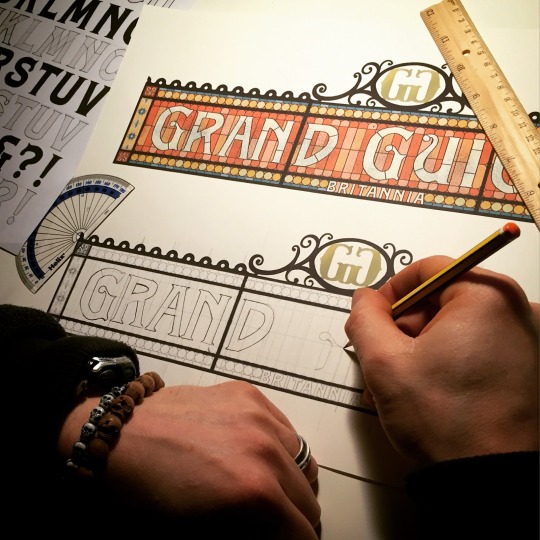
Through this class, I learned that analyzing social contexts is not only crucial for effective communication but also plays a role in shaping unique styles and atmospheres depending on time and place. Understanding what I am designing, who it is for, and how to reach the audience through the right media and market research is a crucial step in becoming a good designer.
(283 words)
References
Das, Rangan. "Graphic Design Technology." Art Workflow, 8 Feb. 2023, updated 23 Sept. 2024, https://www.artworkflowhq.com/resources/graphic-design-technology. Accessed 28 Mar. 2025.
Ulibarri, Bea. "Featured Designer: Annie Atkins on How Studying the World Around Us Makes for Better Character Design." Adobo Magazine, 1 Mar. 2022, https://www.adobomagazine.com/featured/featured-designer-annie-atkins-on-how-studying-the-world-around-us-makes-for-better-character-design-graphika-online-2022/. Accessed 28 Mar. 2025.
#Cultural Materialism#infrastructure#structure#superstructure#Technological realities#Material realities
0 notes
Text
WOII Compulsory: Week 5 & 6 - Design Analysis and Field Trip
Why should we analyze design? Every design has a reason behind it. Colors, shapes, and materials are all used to show a certain feeling or message. By analyzing why certain design choices are made in specific contexts, we can learn to apply these principles in our own work to create more intentional and effective designs.

In Week 5's activity, I analyzed the charms (Jibbitz) and categorized them under the theme of "memory" because users can personalize their shoes by choosing and placing charms as they like, creating a meaningful experience. This uniqueness gives the product a competitive edge. Personalization has been a key part of Crocs’ business strategy, and Jibbitz played a big role in boosting their revenue (Osum). At the same time, because the process is also fun and engaging, I began exploring new connections with the theme of "play" during our field trip.



Considering the features of Jibbitz, I focused on things people can directly experience and enjoy, like a knitted flower that can be gifted, a pinwheel to play with, or a decorated mirror for taking photos. What these all have in common is that people derive value from using these products. Interestingly, even though I took pictures of different objects in different places, I found common design elements when grouped under the theme of "play", bright colors and round, playful shapes. I believe these design elements were used because they evoke a feeling of joy, aligning with the shared goal of making people feel entertained.



In my craft font design class, I created a poster with the theme “enjoy,”. To express this, I used elements like ribbons and curved lines. I also chose bright yellow and pink colors that frequently appeared in the photos taken during our activity with the theme of “play.” These choices helped convey a joyful feeling. Through this design analysis, I was able to notice design principles I would normally overlook and apply them to my own work, making the design more effective.

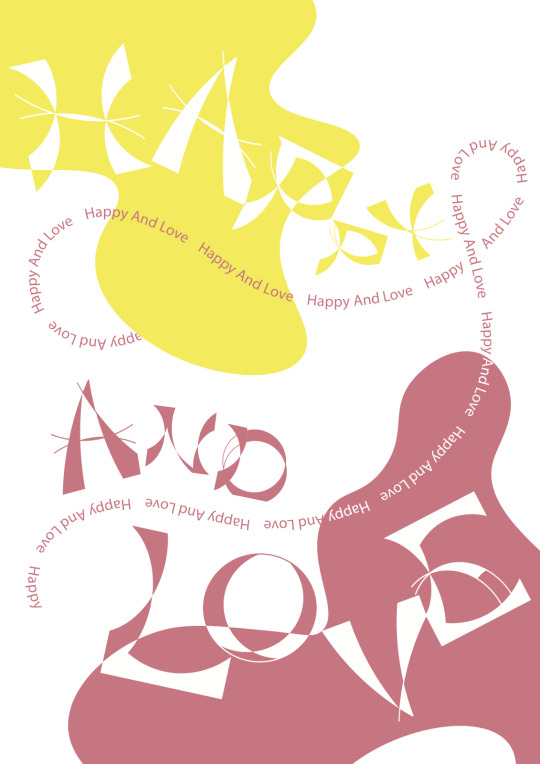
(333 words)
References
Heft-Kniffin, Brandi Sea. "The Magic of the 'Why' in Design." Prototypr, 1 Nov. 2017, https://blog.prototypr.io/the-magic-of-the-why-in-design-12ed3f33f3e2. Accessed 9 Apr. 2025.
Designhill. "20 Tips For Young Graphic Designers." Designhill, 3 Mar. 2019, updated 18 Jan. 2023, https://www.designhill.com/design-blog/tips-for-young-graphic-designers/. Accessed 9 Apr. 2025.
Spacey, John. "Design Analysis." Simplicable, 25 Aug. 2018, www.simplicable.com/design/design-analysis. Accessed 6 Mar. 2025.
"Building a Profitable Croc Charm Business." Osum, 6 Apr. 2024, https://blog.osum.com/croc-charm-business/. Accessed 8 Apr. 2025.
0 notes
Text
WOII: Week 4 - Semiotics
‘It’s like a silent dialogue between the design and the viewer, communicating complex messages in an instant.’(Dyess) Semiotics in design helps us instantly understand visual cues, like the STOP sign’s shape and color, which signal urgency and demand attention.


As a personal activity, I compared two beer advertisements. One depicts a man in an expensive suit leaning against a luxurious bar (signifier), evoking a sense of smoothness and sophistication (signified). Its clean, well-organized layout reinforces this elegance.
In contrast, the Cass beer advertisement conveys a refreshing and exhilarating feeling (signified) through the lively expressions of young people and splashing water (signifier). The diagonal arrangement of text and design elements adds rhythm and energy. Though both ads promote beer, the choice of symbols and visual elements creates entirely different impressions, which I found fascinating.



Using symbols has a powerful impact, helping deliver messages more effectively. Rather than simply presenting information, designs should evoke emotions and leave a lasting impression, especially in advertising. Symbols not only enhance meaning but also help simplify designs. Good design conveys messages clearly and concisely. the more unnecessary elements it has, the less effective it becomes. This is why symbols are crucial. I believe they make designs both impactful and easy to understand.

In a photography class, I worked on a project that visually interpreted a news article warning about rising temperatures. To represent the idea of temperature rise and warning (signified), I used upward arrows and caution signs (signifiers). Through this activity, I realized how much our subconscious associations with shapes and symbols influence design. Applying this understanding to my own work has deepened my appreciation for semiotics and its role in visual communication.

.(278 words)
Reference
Dyess, Chase. "Semiotics: The Unspoken Language of Graphic Design." Medium, 25 July 2023, https://dyessdesign.medium.com/semiotics-the-unspoken-language-of-graphic-design-592db4f6c226. Accessed 5 Mar. 2025.
Nordquist, Richard. "Semiotics Definition and Examples." ThoughtCo., Dotdash Meredith, 23 Sept. 2024, https://www.thoughtco.com/semiotics-definition-1692082. Accessed 5 Mar. 2025.
Malik, Usman. "25 Important Safety Signs, Symbol, and Their Meanings." HSE Blog, 30 May 2024, https://www.hseblog.com/safety-signs-symbol/. Accessed 5 Mar. 2025.
0 notes
Text
WOII: Week 1 - Phenomenology
I think ‘phenomenology’ is about how people see the world differently. Everyone has unique backgrounds and thoughts, so we can interpret the same image in various ways. Personal experiences shape our understanding of reality, making every perspective valuable.

In today’s activity, I thought about shadows. Depending on the light, a person’s shadow can sometimes look like a thin stick. In that moment, in my mind, it’s no longer a person. It’s just a stick. Since shadows have no color and an unclear shape, anyone can interpret them freely, which connects to phenomenology. I found it fascinating how such a simple phenomenon can spark imagination and creativity.

Shadows have long inspired artists to explore their unique qualities. Vincent Bal, known for his shadow art, transforms ordinary shadows into imaginative scenes, like a glass bottle’s shadow into a new world or a slicer’s into a piano. “It’s the science of discovering all the things hidden in the shadows… With shadowlogy, you can make them visible” (Camacho). His work highlights the power of seeing differently, fostering creativity and delivering fresh, surprising experiences.
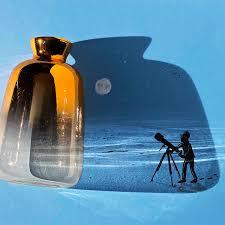

During a craft class activity where we created books with abstract patterns and shapes out of paper, some people saw a spring, while others envisioned a flower or the moon. The fact that each viewer could interpret it differently every time they opened it became the book’s defining feature and value, making it more engaging and enjoyable. By incorporating this mindset into my designs, I hope to create works that evoke curiosity and inspire imagination.

(254 word)
References
"Phenomenology (psychology)." Wikipedia, The Free Encyclopedia, Wikimedia Foundation, https://en.wikipedia.org/wiki/Phenomenology_(psychology). Accessed 4 Mar. 2025.
Camacho, Pedro. "This Artist Turns Shadows into Whimsical Drawings." VICE, Vice Media, 24 Apr. 2017, https://www.vice.com/en/article/vincent-bal-shadowlogy-doodle-artist-shadow-sketches/. Accessed 4 Mar. 2025.
Nalaw-Yatimue, Peter. "The Risks of Negative Perceptions." LinkedIn, https://www.linkedin.com/pulse/risks-negative-perceptions-peter-nalaw-yatimue. Accessed 4 Mar. 2025.
Yamashita, Kumi. "Light & Shadow." kumiyamashita.com, https://kumiyamashita.com/light-shadow. Accessed 4 Apr. 2025.
0 notes
Text
CTS A | Compulsory Question 3

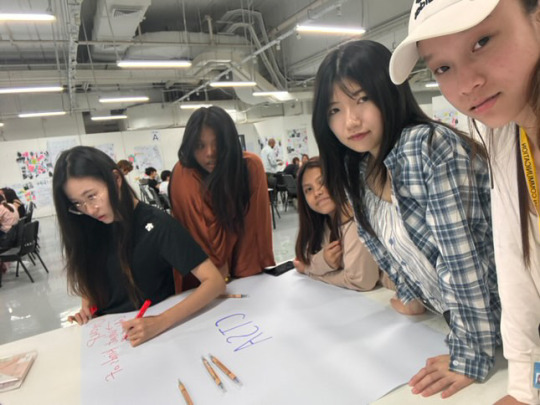
I want to collaborate with music to enhance the emotional impact of visual art. At a media art exhibition, synchronized music made me feel part of the piece. “Music offers creators unique opportunities to engage audiences emotionally by influencing imagery and interactive technology simultaneously” (Iahn). Music can amplify a project’s mood by harmonizing with visuals, like rhythm-based animations or illustrations matching a song’s atmosphere. This will deepen my understanding of sound and visuals and help me integrate musical elements effectively.

For my final project, I want to create a merchandise series that represents my identity, interests, and experiences, branding “me” through visuals. This process will help me understand and convey my unique traits. “With the rise of smartphones and faster broadband speeds, people are consuming more content than ever before” (The Room Marketing). In a world where experiences are heavily dependent on authentic and honest content, branding “me” is essential, inspiring this project.I’ve also been illustrating my daily life as part of this journey.
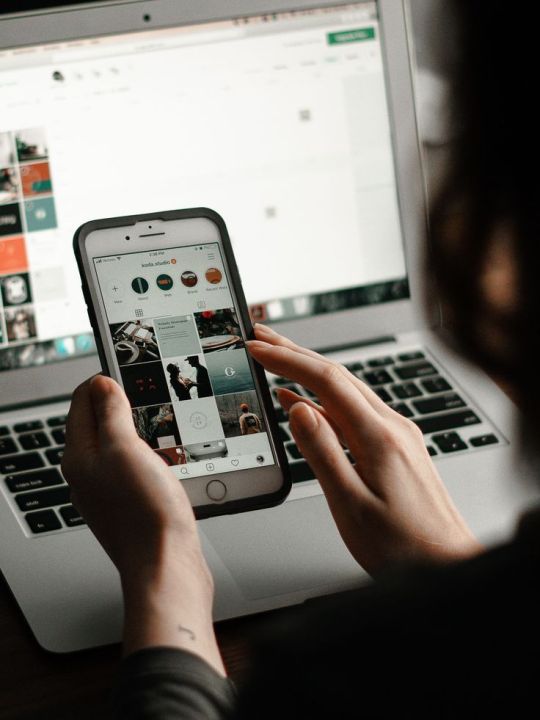
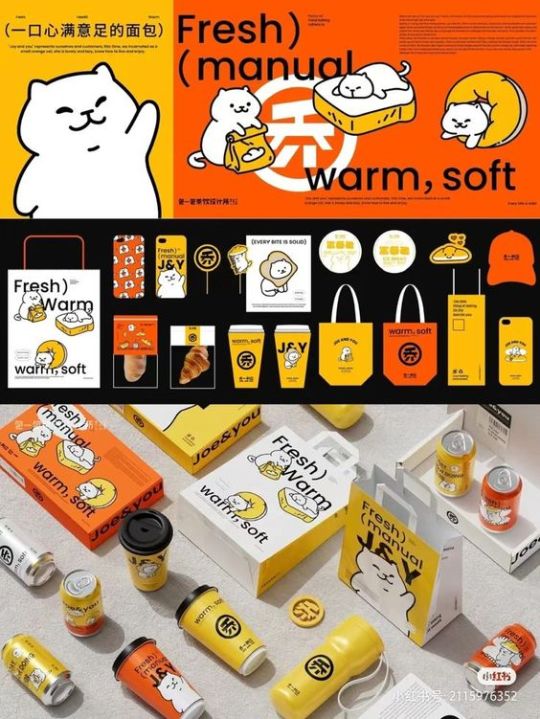


I also considered designing for the elderly. Working at a cafe, I often assisted customers who struggled with kiosks, creating challenges for them and me. With many restaurants now using kiosks or mobile ordering, these can be difficult for older adults. Simplifying UX/UI design—reducing complex elements and optimizing font sizes and colors—could make a big difference. Expanding these improvements across stores could have a meaningful impact.

My goal is to become an illustrator. CTS is valuable for generating creative ideas and adding meaning beyond visual appeal.

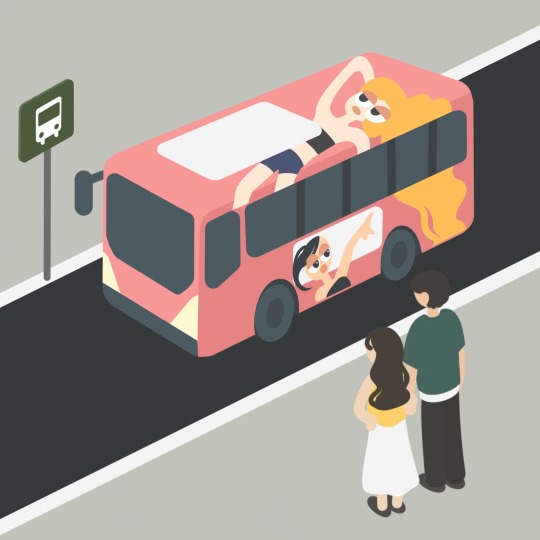
This is an illustration I’m currently working on, inspired by the vibrant bus ads in Singapore. The CTS process of observing my surroundings and reflecting has been helpful in this work.
I also learned to appreciate diverse perspectives and resolve conflicts in collaborative skill and assertion and conflict resolution sessions, which is essential for Illustrators who often work with various teams, including clients. “The ability to get along with colleagues will be vital to the progress of your illustration career."(Rao).


(330words)
Reference
Iahn, Buddy. "How Music Impacts Art & Design." The Music Universe, 2 Mar. 2023,
"Music enhances visual art's emotional impact." Pinterest,
“The Importance of Content Creation for Social Media.” The Room Marketing, 2024,
"Social Media" Pinterest,
“Goods reference" Pinterest,
"Kiosd and elderly" Pinterest,
Rao, Nadia. "What Qualifications Do You Need to Be an Illustrator?" CG Spectrum, 3 Sept. 2021,
“Think" Pinterest,
"Collaborative" Pinterest,
0 notes
Text
CTS A | Compulsory Question 2



In Studio A, connected to all topics in the mind map, we learn to think, organize, and create as designers. This involves challenges, like generating creative ideas, collaborating, and receiving feedback. During week 3, I felt stressed in a font selection activity because my design vision clashed with the lecturer's expectations. I was hurt by the criticism, which affected my motivation. However, emotional intelligence and a growth mindset helped me. “Feedback, as they say, is a gift.”(Eurich). I now see feedback can expand my design perspective. Viewing it as an opportunity to grow makes it easier to accept.
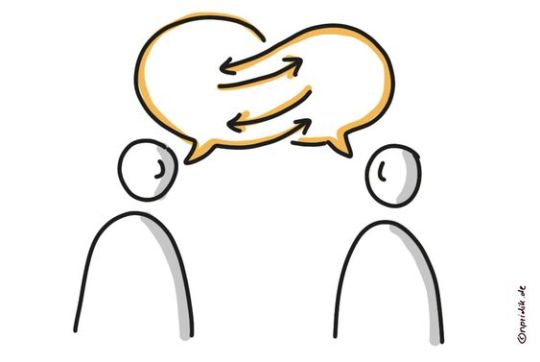

In craft, where we learn to express our thoughts through drawing. My goal is to generate fresh and creative ideas. A valuable lesson on mindfulness taught me to pause, observe my surroundings, and refresh my mind, allowing me to approach tasks from new perspectives. In class, I initially felt unsure about how to approach abstract mark-making assignments, but by observing and using objects like leaves and thread around me, I was able to create unique and creative work.
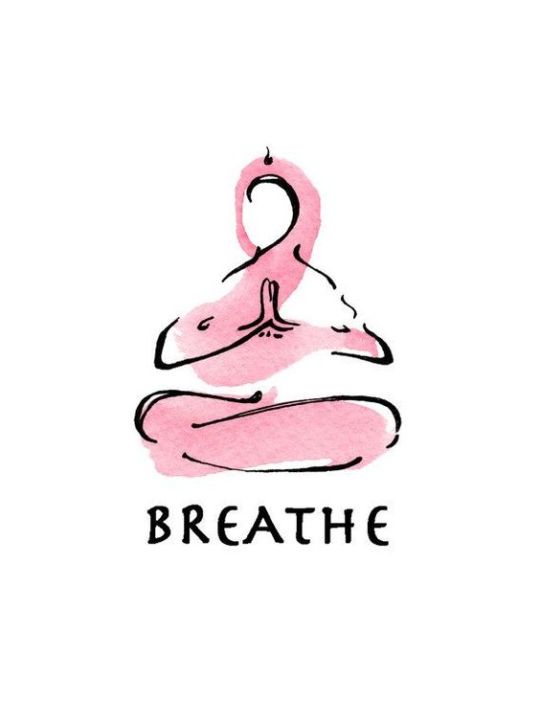
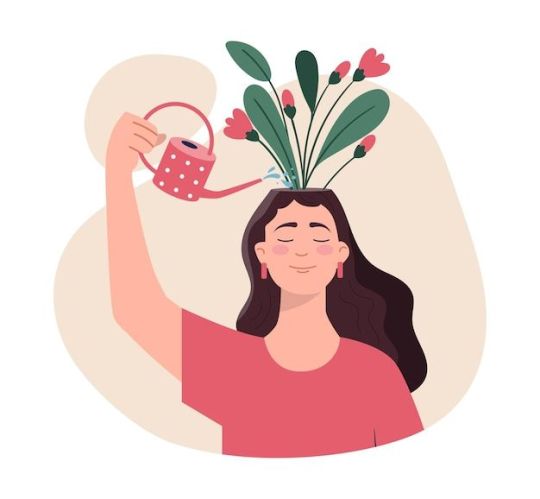
In Digital Skills, we learn new things constantly, which can be difficult without an open mind. “Being open-minded not only helps you learn new things and grow as a person, it can also help you become more optimistic and resilient.”(Cherry). When I first used Adobe Premiere Pro, I felt overwhelmed, but staying open to new experiences helped me overcome those feelings.
In photography, I needed my friend's help for specific poses. When our ideas differed, we made compromises constantly. Working with others allowed me to use my collaborative skills effectively. For example, instead of helping my friend with their photos, I suggested we go to a location that I wanted to use as well. Through our discussions and suggestions, sometimes we ended up creating some unexpected and better results.
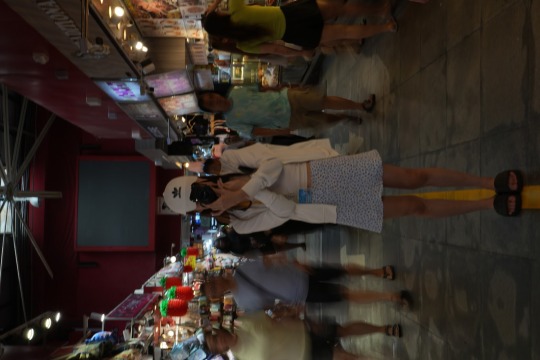

Overall, maintaining an open mind towards learning and challenges is essential as we prepare to become designers, highlighting the importance of our CTS sessions.
(329words)
Reference
Eurich, Tasha. "The Right Way to Respond to Negative Feedback." Harvard Business Review, 31 May 2018,
Cherry, Kendra. "How to Be Open-Minded and Why It Matters." Verywell Mind, updated 22 Mar. 2023,
“Feedback image”, Pinterest,
"Feedback image2" Pinterest,
“Meditation image”, Pinterest,
"Creative ideas" Pinterest,
1 note
·
View note
Text
CTS A | Compulsory Question 1
I believe that Critical Thinking Skills are essential for designers. Design requires working closely with clients and customers. “Artists are not required to make such compromises, whereas designers must if their vision conflicts with commercial objectives” (Turke). Design often involves challenges that require critical thinking to solve.

In class, we used a burger metaphor to show how CTS themes are interconnected. Like a burger combining ingredients into a single bite, each layer of our “CTS Burger” represents a different class concept, stacked to create harmony.

However, we didn't highlight each layer's unique qualities, so I thought of gimbap as my metaphor. Each ingredient in gimbap has its own character, like CTS concepts. The seaweed wrapping, which envelops all the ingredients, represents collaborative skills. The tangy pickled radish, though strong in flavor, creates harmony and reflects assertion and conflict. Together, these ingredients create a balanced taste, even if some might not be appealing alone. Similarly, CTS brings together diverse elements to solve challenges and adapt to change. That’s why I chose gimbap as my metaphor.

My favorite session was collaborative skills (week 2). Working with new people from diverse backgrounds in a foreign country was challenging. At first, I felt nervous and mostly stayed quiet to avoid mistakes. But eventually, I gained the courage to speak up. Thanks to my supportive friends, I realized it’s okay to make mistakes. This class motivated me to be more courageous.



The value of group work lies in the synergy it creates. "We don't get harmony when everybody sings the same note" (Goodier). Even when we look at the same thing, different perspectives lead to new ideas and solutions we wouldn’t think of alone.

I often avoided leading presentations due to my lack of confidence in English. However, with supportive friends, I learned not to fear. Now, I challenge myself to speak more, make mistakes, and try new things to grow. “Nothing ventured, nothing gained” (Peterson). This reinforced the importance of getting involved.



(328words)
Reference
Turke, Emre S. "Art vs. Design: What's the Difference?" Medium,
Springer, Cham “Reflection on Change and Continuity.” Artificial Intelligence and Music Ecosystem, edited by Paulo Turke, Springer, 2023, pp. 97–112. Springer Link,
Goodier, Steve. "We don't get harmony when everybody sings the same note." Goodreads,
"A picture of working in a group." Pinterest, 2024,
Peterson, Kathleen. “Nothing Ventured, Nothing Gained.” Contact Center Pipeline, Feb. 2020,
0 notes
Text
CTS A | Week 5 Growth Mindset

A1. I think having a growth mindset is changing perspectives. “Shifting perspectives can help you thwart automatic thoughts and navigate situations with a balanced outlook. It also gives you the chance to unpack your biases, develop a growth mindset, and even reinvent yourself as a more positive person.”(Perry). I believe the most important thing is maintaining a positive mindset, especially in challenging situations. When I face difficulties, I always try to see them as opportunities for growth. In today’s class, I tried drawing with my left hand. It felt really uncomfortable at first, but then I thought, 'if I used my left hand to draw, I might create unique drawings that don't usually come out.' That shift in perspective made the experience more enjoyable for me. Understanding and accepting my situation while approaching it with positivity and an open mind.

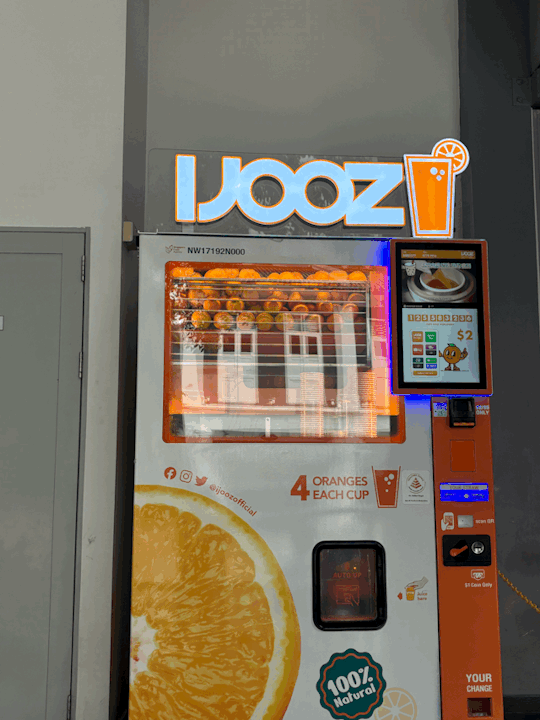

A2. I redesigned the I Jooz logo, and my favorite design is this drawing.

I used the letters "I" and "J" to form the shape of a cup, giving customers the impression of a juice brand.
What I don’t like is this drawing.

It’s just the words "I Jooz" written plainly. I created it while exploring different ways to write the logo, but it doesn't fit the brand's vibe and is hard to read, so I consider it a weak design. However, through this process of trying different approaches, I came up with the idea to form the cup shape with the letters. "Every failed attempt gives you an idea of what doesn’t work and what should work."(Maxwell). If I hadn’t tried out the simple design, I might not have discovered the one I really liked.
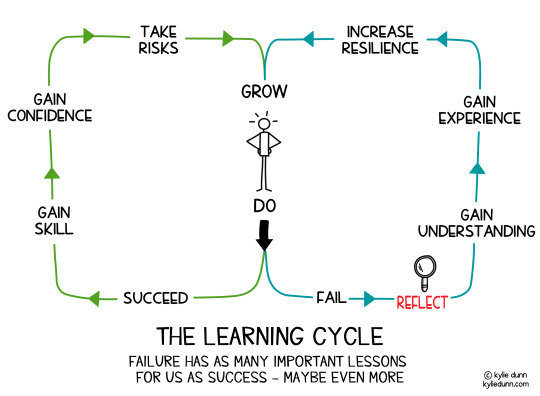

(274words)
Reference
Lechter, Sharon. "How to Change Your Perspective on Life: Making a Transformation That Matters to You." Sharon Lechter, 16 Feb. 2023,
Perry, Elizabeth, ACC. "How to Change Your Perspective." BetterUp, 21 Feb. 2024,
Maxwell, Momodu Abdulahi. "Why Failing Is an Important Part of Success." Forbes, 18 July 2022, 7:45 a.m. EDT,
Dunn, Kylie. "Why Failure Is an Important Part of Success." Kylie Dunn, 6 Apr. 2017,
"Failure is part of success" Pinterest,
0 notes
Text
CTS A | Week 2 Collaborative Skills
A1. My strengths are that I enjoy talking with others, which helps me express my thoughts easily. “There is no right or wrong, only a difference of perspective.”(Lifestyle Desk). Even if someone disagrees, I can respect their view and work toward finding better solutions.
However, my weakness is my limited English. It’s hard for me to express exactly what I want to say, and this weakness can overshadow my strengths. So I always try to talk with others, and stay confident to get more chances to improve. I also watch English videos every day. “Success is the sum of small efforts, repeated day-in, and day-out.”(Guy). I believe small, consistent efforts will help me improve.
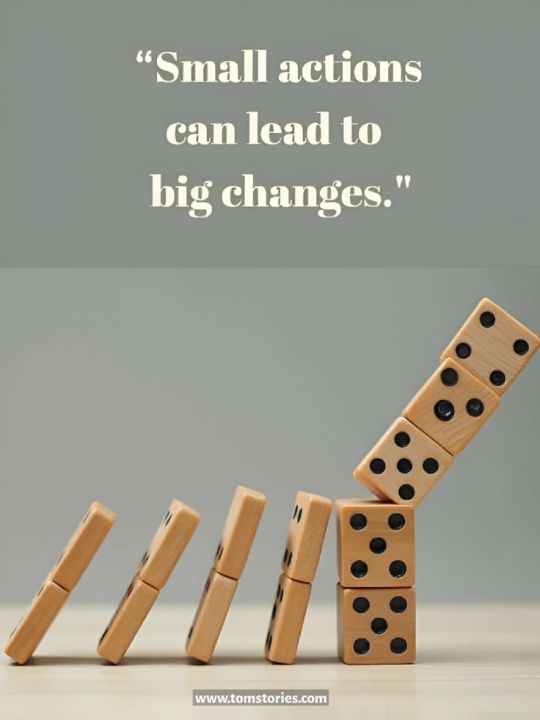

Today, during the monument project, I struggled to express my ideas but made an effort to get my point across. Different opinions came up during the discussion, but we respected each other’s ideas and combined them to create better ones.



A2. We made the monument using paper, but with an unlimited budget, I would use recycled materials. Our monument is about protecting the environment from pollution and waste. By making the tree out of recycled trash, I could convey a sense of circulation and renewal.
“Monuments are often designed to impress.”(Wikipedia). I focused on how they can influence people. That's why I thought it would be interesting if the size and thickness of the branches were determined by each country's contribution to environmental efforts, such as donations to environmental organizations or recycling rates. This approach could be engaging, encourage friendly competition, and motivate people to take part in helping the environment. It would inspire people to think more about environmental issues.

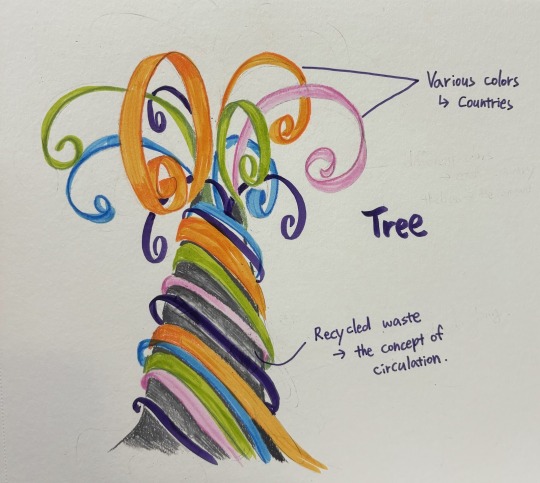
(273words)
Reference
"Lifestyle Desk." "There Is No Right or Wrong, Only a Difference of Perspective." The Indian Express, 9 Dec. 2019,
Guy. "Success Is the Sum of Small Efforts, Repeated." Business Fitness, 6 Sept. 2021,
"Small actions can lead to big changes" Pinterest,
Wikipedia “monument-creation and functions”
0 notes
Text
CTS A | Week 1 What is Critical Thinking?
A1. I used to think critical thinking was only for big issues, but I realized it can also apply to everyday things, like where I am or whether a chair is comfortable. "Change Starts Small."(Hyseni). These small details may seem trivial, but they are the first step to changing the world. I’ve learned to pay attention, ask questions, and find answers.

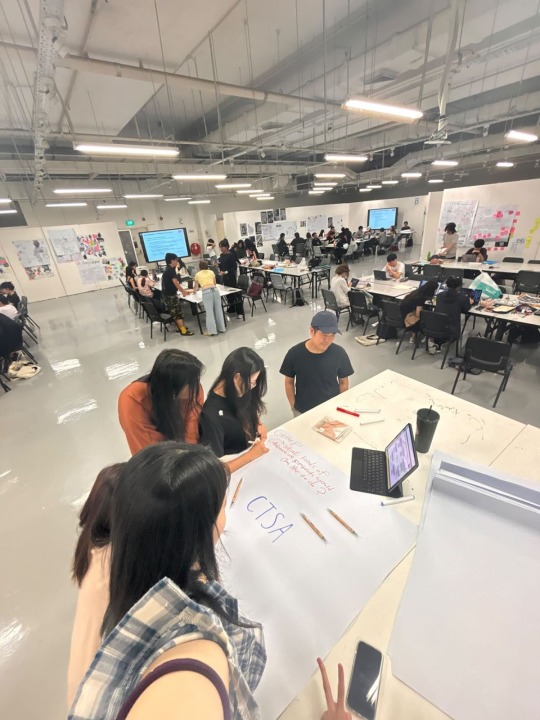
A2. Mindfulness is about focusing on the present moment, which helps me see things differently. When I first arrived in Singapore, I was anxious about my English. But then I realized I was in a perfect environment to improve. While others focused only on design, I had the chance to enhance my language skills too! “Don’t Change the World, Change Yourself” (Noble). Mindfulness helps me observe my situation and shift my perspective, allowing me to solve problems from a new angle. In CTS class, I often worked in groups and had many opportunities to share my opinions, which I enjoyed with confidence thanks to this mindset.



A3. I realized I hadn’t been very aware of my surroundings. During a group project, we started paying attention to the space around us. Someone pointed out that the outlets in the middle of the tables were inconvenient, so we suggested a table with built-in outlets. What surprised me was that I had also found it uncomfortable but hadn’t thought much about it. “Discomfort is a productive force that enables progress in various areas.”(Designforschung). I realize that change happens when we notice what can be improved. I believe it's a designer’s role to create these positive changes, and I’ll practice observing more regularly to become a better designer.


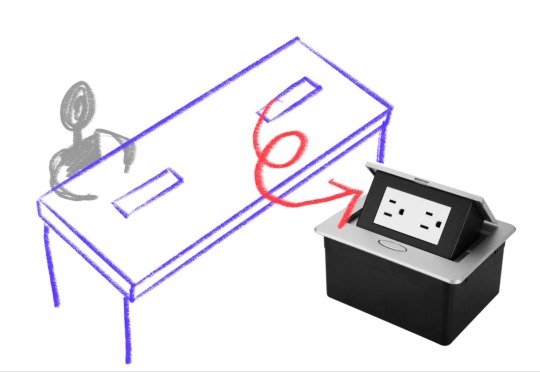
(272words)
Reference
Hyseni, Vlerë. "Change Starts Small." PECB, 2024,
Sharma, Netish. “Importance of Critical Thinking in Everyday Life.” LinkedIn, 2023,
Noble, Rebecca. "Don’t Change the World, Change Yourself." Medium, 14 June 2017,
"New Designabilities Issue: Design Discomfort." Designforschung, Designforschung.org, 10 Oct. 2024,
1 note
·
View note